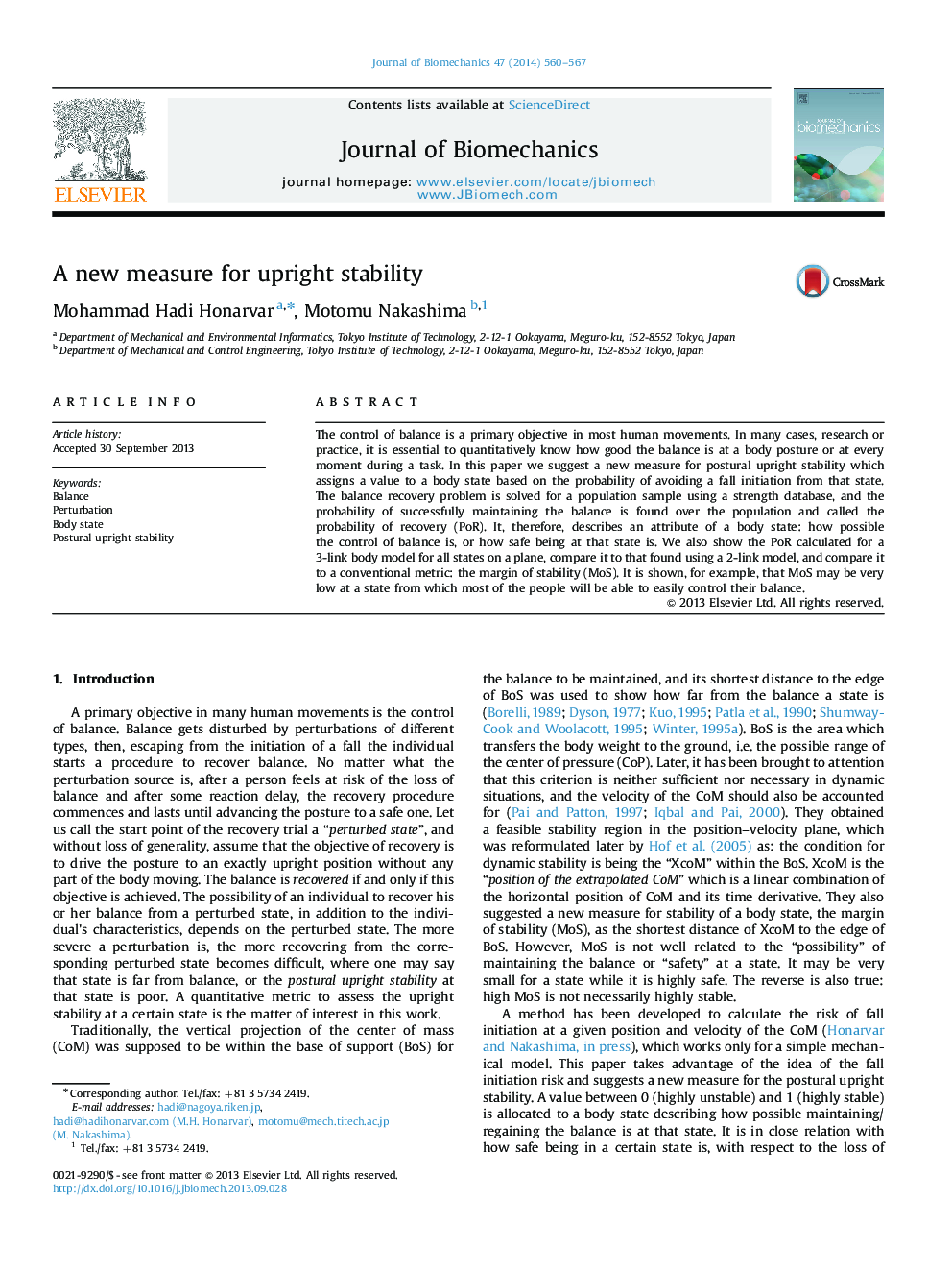| Article ID | Journal | Published Year | Pages | File Type |
|---|---|---|---|---|
| 10431570 | Journal of Biomechanics | 2014 | 8 Pages |
Abstract
The control of balance is a primary objective in most human movements. In many cases, research or practice, it is essential to quantitatively know how good the balance is at a body posture or at every moment during a task. In this paper we suggest a new measure for postural upright stability which assigns a value to a body state based on the probability of avoiding a fall initiation from that state. The balance recovery problem is solved for a population sample using a strength database, and the probability of successfully maintaining the balance is found over the population and called the probability of recovery (PoR). It, therefore, describes an attribute of a body state: how possible the control of balance is, or how safe being at that state is. We also show the PoR calculated for a 3-link body model for all states on a plane, compare it to that found using a 2-link model, and compare it to a conventional metric: the margin of stability (MoS). It is shown, for example, that MoS may be very low at a state from which most of the people will be able to easily control their balance.
Keywords
Related Topics
Physical Sciences and Engineering
Engineering
Biomedical Engineering
Authors
Mohammad Hadi Honarvar, Motomu Nakashima,
